The history of Sierra, the pioneers of graphic adventure (Part 1)

In 1980 it was only a matter of time before anyone had the idea of putting graphics on conversational adventures. The first to have that idea was a Californian couple, Ken and Roberta Williams.
Roberta's writer mind and Ken's programming skills drove the founding of one of the most important video game companies in history: Sierra.
Chapter 1- The origins
We have to go back to 1970 to talk about the origins of Sierra. The year Roberta (single-minded Heuer) met her future husband, Ken Williams.
Both lived and studied in a small town in Southern California. Roberta was 17 at the time and Ken was only 16. They were married in 1972.
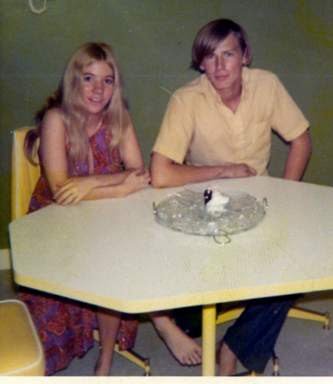
How did this couple end up working in the video game world?
In 1979 Ken worked as a programmer for IBM in Simi Valley, where the couple had moved. For work reasons, he had to acquire an Apple II computer that he used to develop software.
Roberta looked after the house and the two children she had with Ken (Chris and DJ).
One day Ken called Roberta to tell her to look at the computer screen. What it had was a working copy of Colosal Cave Adventure, which left Roberta completely bewildered. Years later he would confess:
I started playing and kept playing. I had a baby back then; my son Chris was only eight months old. I completely ignored him. I didn't want to be disturbed. I couldn't stop playing to make dinner.
Roberta spent sleepless nights playing and when she finally went to bed, she couldn't sleep trying to figure out the puzzles of that title. It was a great relief for Ken when his wife managed to complete the game, about a month after he started it. But the seed was already planted.
Roberta soon became interested in such games, especially those developed by Scott Adams: Adventureland, Voodoo Castle or Strange Odyssey, among others. I played all these games obsessively. That's when she began to think more of herself as a creator than a consumer of video games. What if she tried to develop a conversational adventure on her own?
He began to write sketches of a script. He created a complete story, inspired by Agatha Christie's novel "10 Negritos" and board game Cluedo. He imagined and printed his own conversational avetura, with a mysterious murder as the main element.
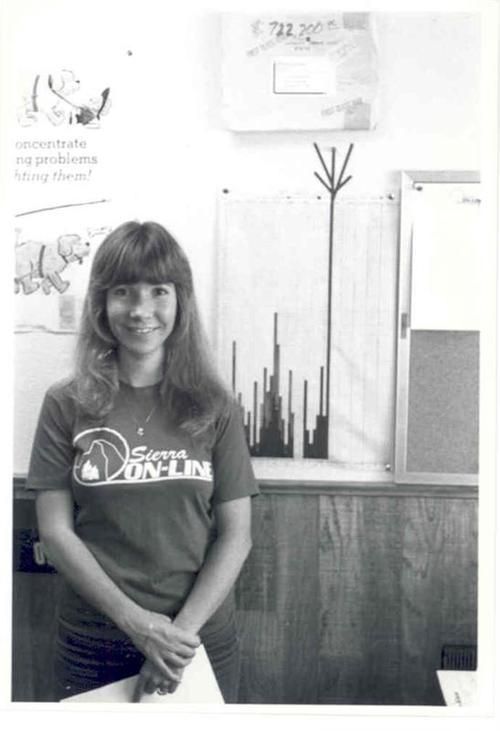
She gave her husband the whole story so he could schedule it. But Ken was skeptical about Roberta's idea.
While the concept of history was appealing to him, Ken felt that the idea was not innovative enough to attract future buyers.
However, he couldn't just throw away his wife's project. Partly because she was very excited and also because she was seeing video game companies like Adventure International go up in the air, so there was a chance to create something that would bring them short-term financial benefits.
Ken finally decided to take advantage of the 48K of his Apple II and its ability to generate high-resolution graphics (hi-res). He told his wife to draw the locations he had in mind for the game and she set to work.
Although Roberta was not very good at drawing, she created a few sketches, just as her husband had asked her to. He made 30 drawings, one for each phase of the game.
But now the problem was with Ken. How do you transfer those drawings to your Apple II? There were hardly any drawing programs and the mouse had not yet been invented, so the task could be quite complicated. While Apple had been marketing a tablet for about a year now that served that purpose, it cost about $600, which would be a huge investment at the time.
The solution was the following: they bought a device designed to create diagrams, called VersaWriter, that allowed computerizing drawings by calculating from a piece of paper. It was about $200. Ken designed the software that allowed him to use the VersaWriter on his Apple II. He also designed his own language to carry out the programming of the game, which later on would be called SCI (Sierra Creative Interpreter).
Once this problem was solved, and also the problem of storage (Ken didn't find it easy to compress the data on a single disk), they began to program the game.
It took them three months to finish it. The final product was undoubtedly what Ken defined as a "Wow"scoring game. He had elements that made him unique and that would make the players interested in him.
Not only did it include graphics, but interactive elements such as notes that we could collect and store, which, in turn, could be released at any other stage of the game, were also present on the stage. This may seem simple today, but at that time it was a real milestone.
The title of the game can't be said to be a boast of originality, given the plot of the game: Mystery House. Now it was just a matter of deciding what to do with it.
Chapter 2- On-Line Systems
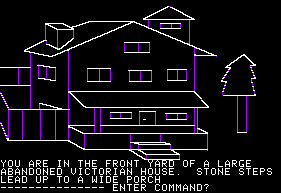
Ken and Roberta Williams decided to try to sell the game to one of Apple's biggest software publishers at the time: Programma International. This company was mainly selling software, although it had also released many games.
They were very interested in the program that their marriage had brought them and were very impressed with the potential it had. The offer they made to the Williams was 25% of the total winnings of the game, promising them that they would easily earn about $9,000 by the end of the year. However, this offer did not convince Ken, an ambitious person by nature. He felt that they could make a lot more profit from that game if they were to publish it on their own.
Months earlier Ken had registered a trademark called On-Line Systems, which he intended to use to sell a FORTRAN compiler for Apple II he had been designing.
In turn, the couple contacted a friend who had scheduled a shooting game called Skeet Shoot and asked permission to sell his program from the new company they were going to set up. This way they would have two games to bring to market at the time of the brand's launch.
Thus, in May 1980, On-Line Systems was born, the first commercial brand of Williams and from which they would publish their first games.
Ken and Roberta made some commercials by cutting out letters and words from magazines and pasting them on a piece of paper, then photocopying and distributing them everywhere.
They also put a couple of advertisements in computer magazines, to get more visibility.
They made 100 copies of the game and packed them in Ziploc bags.
It was only a matter of waiting for the first orders.
They had no idea how short those first 100 copies of Mystery House, which were sold in the first few days, were going to be.
The game was a resounding success. Given the large number of orders they were receiving, and as has become customary in these cases, they were overwhelmed. They were soon distributing their software to computer stores across the country.
By the end of that first month in May 1980, they had already earned the whopping $11,000.
To see the scope of the product, Ken thought he'd visit computer stores throughout Southern California, and was glad to discover that his programs were being sold in virtually all of them. He also spoke with his brother John, who was a student at the University of Illinois, asking him to take a look at the stores over there. And indeed, most of the stores had On-Lline Systems software on sale. They were definitely achieving something big.
The Williams finally decided to distribute themselves through other important publishers, Adventure International among others. This meant a push to sell a total of 80,000 copies of Mystery House, with the consequent economic benefit.
On-Line Systems had become one of the great ones as soon as he was born. The idea of including images in a conversational adventure had succeeded, even though the images were not very good.
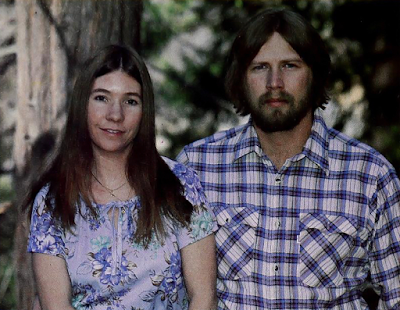
But now that they were clear that it was a secure market, in which they could generate great long-term profits, they could afford to create more ambitious games and risk further developing them.
After all, Mystery House was just an experiment to find out if it was worthwhile to get into that fledgling market at the time.
In this way the Williams began to give life to their next project, written of course by Roberta. This time it would be inspired by Tolkien's fantasy novels and titled The Wizard and the Princess.
Ken knew that what had allowed them to make the leap and get into the market was the idea of including images in the game. It had been something innovative, something new. But they couldn't just repeat the same formula if they wanted to keep surprising people.
That's why for this new project he decided to include color graphics. He even designed his own drawing program to make the graphics. This program even allowed to draw several points and then link them together through straight lines.
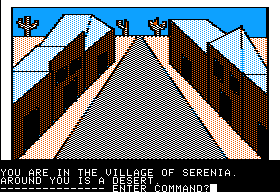
The final result was totally spectacular. Not only had they managed to improve the quality compared to Mystery House, but they had also managed to create beautiful images for the time.
Let us not forget that it was 1980. At that time people weren't used to this kind of thing, so Ken decided once again that the game had the already mentioned "Wow"factor. The person who tried that game in his usual shop would end up buying it without thinking about it for a minute. In addition, it was the first color graphic adventure. Again they had set a precedent.
The game was released in September 1980, just four months after the company's birth. It was a resounding success, selling more than 60,000 copies in total at a price of $32.95 per unit after being ported to other systems, such as Atari 8 Bits or C-64.
The game was part of a new series of adventures called Hi-Res and is a prequel of the King's Quest series, which would be released some time later.
They also included Mystery House in that same series retroactively, making it Hi-Res #1, so The Wizard and the Princess would be the No. 2 in that series.
Before the end of 1980 they would be able to publish yet another title.
They also included it in the Hi-Res Adventure series and numbered it #0, thus making it an introduction to the two previous games. It was titled Mission Asteroid, and it was a science fiction game written by Roberta. It went unnoticed more than the two previous pitches. It was also a much shorter and simpler game.
In the mere seven months of his life, On-Line Systems had begun to function as a powerful company and a promising future was predicted for him. That's why Ken and Roberta decided to go a step further in professionalization.
Chapter 3- Sierra On-line
During 1981 they decided to move to Coarsegold, a town located near the Sierra Nevada Mountains and Yosemite National Park. They bought a rustic three-bedroom cottage on the outskirts of the town, very close to where Roberta's parents had land to grow apples.
Nearby, in the town of Oakhurst, they began to build the new offices that they wanted to have in the future, which would be inaugurated in 1982. This was a matter of the utmost necessity, since until now they had always used their own home as an office, with all the inconveniences that this entailed, including late-night calls from players who had become stuck in one of their games.
On the other hand, at this point in time, they already had some employees, who had to work in the house of the couple, sometimes late.
While the company's new headquarters was being built, a few more games were released, both in and out of the Hi-Res Adventure series. One of the games published by the company was Softporn Adventure, considered the first adult game in history.
It was an erotic conversation adventure, in which no graphics of any kind were included. The highlight of this game is undoubtedly the cover, which features several On-Line Systems employees in a hot tub, including Roberta Williams herself.
The game was again a remarkable success. It sold more than 50,000 copies and helped popularize the company. On the other hand, they also received a lot of complaints from the community of players, some of whom thought it was not an appropriate game to be marketed. Even some of their close neighbours admonished them for having published that adventure.
Another game that stands out at this stage was the Time Zone. It took six months to develop and it was the biggest game they had ever made.
It had 1,500 rooms, probably the largest game ever developed.
The game was distributed in six double-sided diskettes. In addition, it was not a simple game, as calls from jammed players multiplied.
Finally, in 1982, they finally moved to Oakhurst's offices. This led the company to change its name as well, being renamed Sierra On-line (in honor of its location). The company's logo was also modified and became the mythical logo that we all know today in which appears a drawing of Mount Yosemite, near the company's facilities.

The company's personnel increased, reaching more than one hundred workers in 1982. Companies from all over the world contacted them to distribute their games, which were not only limited to graphic adventures. They also made conversions of Arcade games like Frogger, even published a clone of Pac-Man called Jawbreaker, which even received an award for "Best Action Game" in 1982.
Some companies tried to buy the company from Ken, which he never accepted. He knew perfectly well that he was creating something very big and did not let himself be hypnotized by the exorbitant figures that put him on the table (reaching the $20 million mark without any problems).
In mid 1982, Roberta received a call from Jim Henson, creator of The Muppets (Los Teleñecos en España). He played a lot of Sierra games and wanted to know if Roberta would be interested in writing an adventure game based on her latest movie, which had not yet been released: The Dark Crystal.
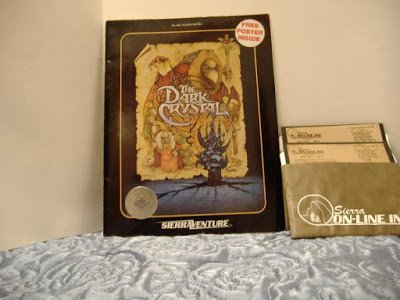
Roberta accepted, of course, and asked to be sent a copy of the script to get to work immediately.
The game was released under the Sierra Venture label, and was part of the Hi-Res series, being the last adventure of that collection.
As a thank-you note, Roberta was invited by Jim Henson to the film premiere where she was able to meet the director in person.
That same year, in September, Ken and Roberta were invited to the AppleFest in San Francisco, a dinner attended by the most representative faces of the industry, with Steve Wozniak as guest of honor.
That same night, an unexpected catastrophe occurred: a fire broke out in the house of the couple in Coarsegold. The children were inside the house when it happened, although they were taken to safety by the nanny. The house was completely destroyed and practically nothing could be recovered. Among all the valuable material that was lost was included an original Apple I motherboard, a loss that Ken deeply regretted.
The couple had already been thinking about moving out and buying a bigger house, taking advantage of the substantial gains they had made in the past two years. The fire precipitated this event, and they acquired a huge property of more than 3,000 square meters near the Fresno River. This huge farm, which had all the amenities, cost them about $800,000.
Chapter 4 - King's Quest
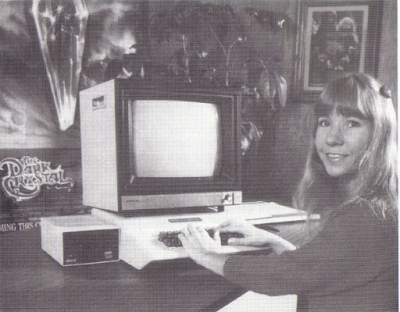
In late 1982 Ken and Roberta received a major commission from the IT giant IBM. This company was developing a new computer in absolute secrecy. It was planned to be released in 1984 and for the premiere they wanted to have a game that took advantage of all the graphic and sound features of the computer.
It was the IBM PCjr (a. k. a. Peanut) and was the first attempt by this company to enter the low-cost computer market.
To make it easier for them to develop the game, IBM gave Ken a prototype of the new computer and invested $850,000.
Roberta got down to work and started writing the game and designing the graphics. This time it would be a color fantasy story, with animated graphics, and in which we could move around the stages. Ken had to design a new engine called AGI (Adventure Game Interpreter) and a text analyzer to process advanced commands.
Up to 6 programmers worked on the game piecework during the more than six months of development.
This is how King's Quest I: Quest for the Crown was born, a title that couldn't see the light until the computer for which it was designed was released. With this game, one of the best-known sagas of the graphic adventure genre began, as well as being the first graphic adventure with animated graphics.
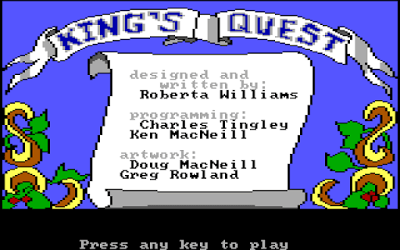
The period from the end of the game until it was released was about to bankrupt Sierra On-Line. They were forced to port their games to cartridge systems, such as the Atari VCS or the VIC-20. This was a very strong capital investment for the company, which was unsuccessful because they were unable to sell those cartridges.
This affected the company's economy severely and they hardly survived. They had to make a significant reduction in the number of employees, from the more than 100 employees they had at that time to just 15. The only hope for recovery was that King's Quest I would make a lot of sales.
However, when the game was released at the same time the IBM PCjr did not achieve the expected success, mainly due to the lack of sales of this computer, which was not well received due to its poor value for money.
Sierra On-Line hastened to make several ports of the game, in order to sell it on other systems and obtain the expected profit. This is how versions for Apple II, PC and Tandy-1000 were born. The latter became the market leader, so King's Quest I sales finally shot up. The specialist press clouded it up and described it as a masterpiece, extolling music and sound effects above all else.
In this way Sierra On-Line overcame its first financial crisis. And with King's Quest they seemed to have found the goose that lays the golden egg, so why not make a complete series?
Before starting to prepare the King's Quest sequel, Roberta designed Mickey's Space Adventure, a new licensed game and Disney characters, which would end up being part of a new trilogy. It was published in late 1984.
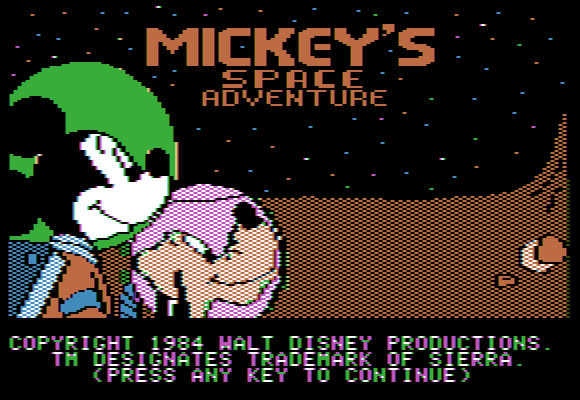
This game was the last conversational adventure of Sierra On-Line, since from King's Quest I they were fully dedicated to the graphic adventures as we know them today. In addition, for the first time, Roberta's design work was carried out without the help of Ken, who was immersed in his duties as a director of a large company. Al Lowe was in charge of the programming tasks, who later on created another sagas more characteristic of Sierra, which we will talk about at another time.
We've already seen Ken and Roberta create and expand the company in just four years, to the point of becoming a developer and publisher of external studio titles and a multinational. They had expanded their catalogue to more than 30 games on the market, making them one of the most powerful companies in the industry.
The rest of the story will be told in the next chapter.
Thanks for sharing...
@azziz
You are welcome!